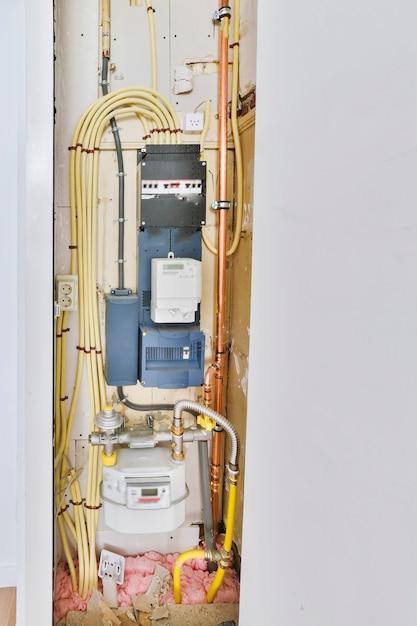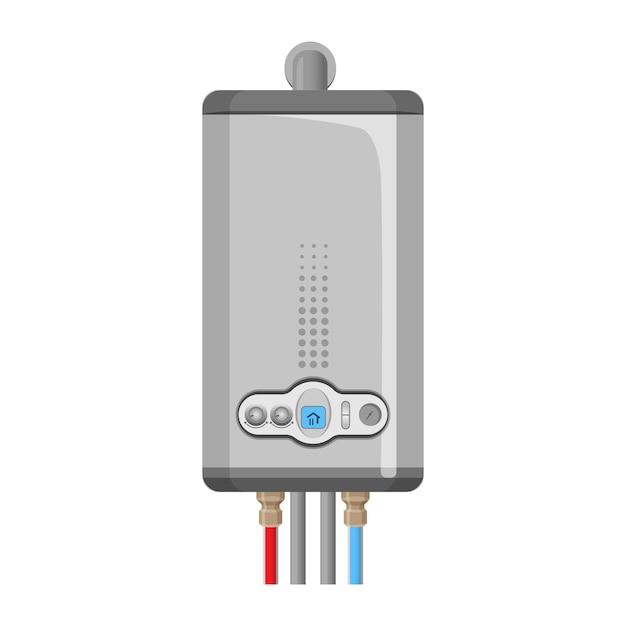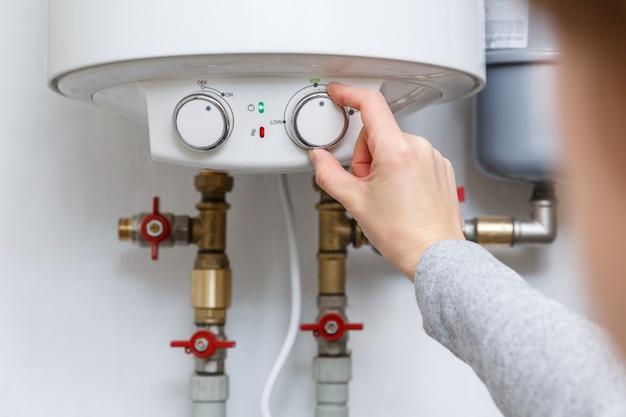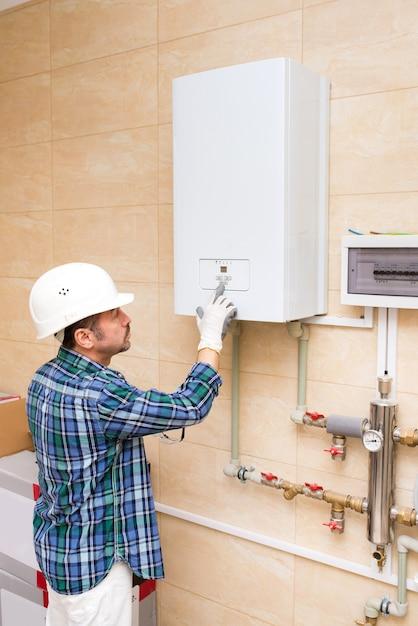Homeowners are always on the lookout for the latest innovations to make their lives easier and more comfortable. One appliance that has gained popularity in recent years is the tankless water heater. With its ability to provide hot water on demand and save energy, it’s no wonder people are considering installing them in various parts of their homes. But what about the attic? Can a tankless water heater be installed there? In this blog post, we will delve into the world of attic installation, exploring the code regulations, potential drawbacks, and benefits of having a tankless water heater in this unusual location. So let’s dive in and find out if it’s truly a good idea or not!
Can a Tankless Water Heater be Installed in the Attic
So, you’re thinking about installing a tankless water heater in your attic? Well, you’re definitely on the right track to saving space and energy! But before you climb up there with your tools and start hammering away, let’s dive into the details and see if it’s a feasible option.
Assessing Attic Space
First things first, you need to assess the space in your attic. It’s not rocket science, but you do need to make sure you have enough room to accommodate the tankless water heater. These units may be smaller than conventional water heaters, but they still require a certain amount of clearance for proper ventilation and maintenance. Measure twice, cut once—or in this case, measure twice, install once!
Ventilation Considerations
Ventilation is a crucial factor when it comes to installing a tankless water heater in your attic. These units produce exhaust gases that need to be safely vented outside to prevent any potential hazards. You’ll need to ensure that your attic has proper ventilation to accommodate this. Consider consulting a professional to assess your specific attic layout and ventilation needs.
Insulation Matters
The attic can be a hot and cold mess at times, quite literally. It experiences extreme temperatures, and insulation plays a key role in regulating them. When installing a tankless water heater in your attic, you need to consider its insulation requirements. Adequate insulation will not only help maintain the water heater’s efficiency but also protect it from temperature fluctuations, increasing its lifespan.
Access and Maintenance
Let’s be real—a tankless water heater is not something you’ll install and forget about forever. It requires periodic maintenance to keep it running smoothly. So, it’s important to think about how accessible your attic is for regular maintenance tasks. You don’t want to be crawling through tight spaces or climbing steep ladders every time you need to check up on your water heater.
Safety First
Last but definitely not least, safety should be the top priority when considering an attic installation for your tankless water heater. Attics can be tricky places, with limited space, potential electrical hazards, and other safety concerns. It’s essential to consult a professional to ensure that all safety measures are taken into account during the installation process.
In conclusion, while it is possible to install a tankless water heater in the attic, it’s important to carefully assess the space, consider ventilation and insulation requirements, ensure easy access for maintenance, and prioritize safety. If you’re unsure about any of these aspects, it’s always best to consult a professional to get the job done right. So, go ahead, embrace the tankless revolution, and enjoy endless hot showers—attic-style!
Water Heater in Attic Code
Is it allowed to install a tankless water heater in the attic
Installing a water heater in the attic can be quite convenient, especially when space is limited in other areas of the house. However, it’s crucial to be aware of the applicable building codes and regulations before proceeding. So, let’s dive into the code requirements for installing a tankless water heater in the attic.
In-depth understanding of building codes
Building codes play a crucial role in ensuring our safety and the structural integrity of our homes. When it comes to installing water heaters in specific areas like the attic, these codes become even more important.
Code restrictions and considerations
- Access and clearances: Building codes usually require proper access and clearance spaces around the water heater for maintenance purposes. Before installing a tankless water heater in the attic, make sure to check the codes for the required clearances, such as the width and height of the space.
- Ventilation: Adequate ventilation is vital for a water heater to operate safely and efficiently. The building codes typically specify the necessary requirements for venting systems, such as vent size and clearance from combustible materials. Ensure that the attic provides sufficient ventilation and meets the code requirements.
- Floor reinforcement: As water heaters can be quite heavy, it’s important to ensure the attic floor has the necessary structural support to carry the weight. This may require reinforcement according to the building codes.
Consulting local authorities
To navigate the complex world of building codes, it’s always a good idea to consult local authorities, such as building inspectors or licensed professionals. They can provide specific guidance on the code requirements in your area, including the installation of tankless water heaters in attics.
Hiring a professional
Given the intricacies involved in complying with the building codes, hiring a professional plumber or HVAC technician experienced in attic water heater installations can save you time, money, and potential headaches. They will be well-versed in the local codes and ensure that the installation is done correctly and safely.
While having a tankless water heater in the attic may seem like an advantageous space-saving idea, it’s crucial to consider the building codes. Adequate access, clearances, ventilation, and floor reinforcement are essential factors to comply with code requirements. Always consult local authorities and consider hiring a professional to ensure that your installation is both safe and in accordance with the regulations in your area.
Can You Install a Water Heater in the Attic
Have you ever wondered whether it’s possible to install a water heater in your attic? Well, you’re not alone. Many homeowners consider this option due to space constraints or simply because it seems like a convenient solution. However, before you start making plans to hoist a water heater up into your attic, there are a few things you need to know.
Safety First: Considerations for Attic Water Heater Installation
Installing a water heater in the attic may seem like a great idea, but there are safety considerations you need to take into account. Attics are not typically designed to support the weight of a water heater, which can be quite hefty. Before you start the installation process, it’s crucial to consult a structural engineer or a professional plumber to assess if your attic can handle the weight.
Accessibility: Ensuring Easy Maintenance and Repairs
While the attic may seem like a hidden gem for installing a water heater, you should also think about the practical aspects. Attics tend to be cramped spaces with limited accessibility. If you ever need to perform maintenance or repairs on your water heater, you’ll want to make sure you can easily access it without any hassle. Trust me, contorting your body into awkward positions in a small attic space is not how you want to spend your weekends.
The Heat Factor: Is It Ideal for an Attic
Attics can be hot, especially during the scorching summer months. This excessive heat can have a negative impact on your water heater’s performance and lifespan. Water heaters already generate a considerable amount of heat, and placing it in an already hot attic may lead to decreased efficiency and potentially even damage the unit. It’s crucial to consider the impact of the ambient temperature on your water heater’s overall functioning.
The Overflow Effect: Guarding Against Potential Leaks
Leaks happen, and when they do, it’s better to be prepared. While a water heater leak can cause significant damage, having it happen in your attic adds an extra layer of complexity. If there’s a leak, it could potentially damage the ceilings, walls, and valuable belongings stored below. Installing a water heater in a location where potential leaks are directly above living areas is a risk that not everyone is willing to take. It’s essential to carefully weigh the potential consequences before moving forward with an attic installation.
Final Verdict: Proceed with Caution
In conclusion, installing a water heater in the attic may seem attractive at first, but it’s important to approach the idea with caution. Take into account the structural integrity, accessibility for maintenance, potential heat-related issues, and the risks of leaks damaging your home’s other components. Consulting with professionals is highly recommended before making a decision. While the idea of a hidden water heater in the attic may sound appealing, it’s best to make an informed choice based on your specific circumstances and needs.
Where Not to Install a Tankless Water Heater
Introduction
When it comes to installing a tankless water heater, location is key. While these efficient and space-saving units can be installed in a variety of locations, there are a few places where they should not be installed. In this subsection, we’ll explore these areas to help you make an informed decision about where to install your tankless water heater.
In the Attic
While installing a tankless water heater in the attic may seem like a clever way to save space, it’s best to steer clear of this location. Attics tend to be hot and poorly insulated, which can lead to decreased energy efficiency and potential damage to the unit due to high temperatures. Additionally, accessing and maintaining the unit in the attic can be a challenge, making repairs or regular maintenance more difficult.
In Small, Enclosed Spaces
Another area to avoid installing a tankless water heater is in small, enclosed spaces such as closets or tight utility rooms. These units require proper ventilation to safely release exhaust gases. Placing them in confined areas can impede airflow and lead to a buildup of these potentially harmful gases. For optimal performance and safety, it’s essential to ensure adequate space around the unit for both ventilation and service access.
Near Flammable Materials
It’s crucial to keep your tankless water heater away from any flammable materials. This means avoiding installation near gas pipes, electrical wiring, or storage areas with combustible items. While tankless water heaters have safety features to prevent accidents, it’s always better to err on the side of caution. Keep your unit installed in a location that is free from potential fire hazards and allows for proper airflow.
In Areas with Freezing Temperatures
If you live in an area with freezing temperatures, it’s important to protect your tankless water heater from the cold. These units are not designed to be exposed to freezing conditions, as water inside the unit can freeze and cause damage. Avoid installing them in unheated areas like garages or basements without proper insulation. If you must install a tankless water heater in these locations, make sure to take the necessary steps to protect it from freezing, such as adding insulation or utilizing a frost protection kit.
While tankless water heaters offer flexibility in terms of installation, there are some places where they simply shouldn’t be placed. Avoid installing them in attics, small enclosed spaces, near flammable materials, or in areas with freezing temperatures. By adhering to these guidelines, you can ensure your tankless water heater operates safely and efficiently for years to come.
Is it a good idea to put a tankless water heater in the attic
So you’re considering installing a tankless water heater in your attic? Well, hold your horses! While the idea may sound tempting, there are a few things you should consider before going ahead with it.
The heat is on
Attics can get pretty hot, especially during the scorching summer months. And guess what? Tankless water heaters don’t like excessive heat. They work best in moderate temperatures, and subjecting them to extreme heat can cause performance issues and reduced lifespan.
Ain’t nobody got time for leaks
Water leaks can be a major headache, especially if they happen in your attic. If your tankless water heater develops a leak, it could potentially cause water damage and mold growth. Not to mention the hassle of fixing the leak in a hard-to-reach area. So, unless you enjoy playing hide-and-seek with leaks, it might be better to look for alternative installation locations.
The space race
Attics are often used for storage, and let’s be honest, they can get pretty cramped up there. Installing a tankless water heater in an already limited space can make accessing it for maintenance or repairs a real challenge. Plus, you’ll need to ensure that the attic can handle the weight of the unit, as water heaters can be quite heavy.
Noisy neighbors
Tankless water heaters are generally quieter than their tank counterparts, but they still make some noise. If your attic is situated above a living space, the noise from the water heater could potentially be bothersome. You don’t want your peaceful movie night downstairs to be interrupted by the sounds of heating water, right?
Frosty winters
If you live in an area with freezing winter temperatures, an attic installation might not be your cup of tea. Tankless water heaters are not known for their resistance to freezing temperatures, and if the attic gets too cold, you might have a frozen water heater on your hands.
In conclusion, while it may seem like a convenient option, installing a tankless water heater in the attic might not be the best idea. The potential for heat-related issues, water leaks, limited space, noise disturbances, and freezing temperatures make alternative installation locations worth considering. It’s always a good idea to consult with a professional plumber to determine the most suitable and efficient placement for your tankless water heater.
Can a Gas Tankless Water Heater be Installed in an Attic
Installing a gas tankless water heater in an attic is not recommended due to several safety concerns. Attics are typically enclosed, poorly ventilated spaces that can become extremely hot during summer months. This excessive heat, combined with the potential for gas leaks or malfunctions, poses a significant risk.
Safety First: Ventilation Matters
Gas tankless water heaters require proper ventilation to safely release the combustion byproducts. Attics are not designed to accommodate the necessary ventilation requirements, which can lead to a buildup of harmful gases like carbon monoxide. Without proper venting, these gases can seep into your living spaces, endangering your health and safety.
Watch Out for Heat Buildup
Another major concern with installing a gas tankless water heater in an attic is the potential for heat buildup. Attics tend to have poor insulation and inadequate airflow, causing temperatures to soar during hot summer days. This extreme heat, coupled with the heat generated by the water heater, can lead to serious issues, including system overheating, reduced efficiency, and even fire hazards.
Operational Challenges
In addition to safety concerns, there are practical challenges associated with installing a gas tankless water heater in an attic. These units require proper access for maintenance and repair, and attics are often cramped, making it difficult and inconvenient for service technicians to work on the system. This can result in higher maintenance costs and longer turnaround times for repairs.
Consider Alternatives
If you’re considering a tankless water heater but don’t have space elsewhere in your home, there are alternative installation options to explore. For instance, a gas tankless water heater can be installed outdoors, provided it’s designed to withstand outdoor conditions. Alternatively, a smaller electric tankless water heater can be a suitable choice if attic space is your only option.
Remember, safety should always be your top priority when it comes to installing any type of water heater in your home. Consulting a professional plumber or HVAC technician is crucial to ensure that you make the right decision and meet all safety requirements.



